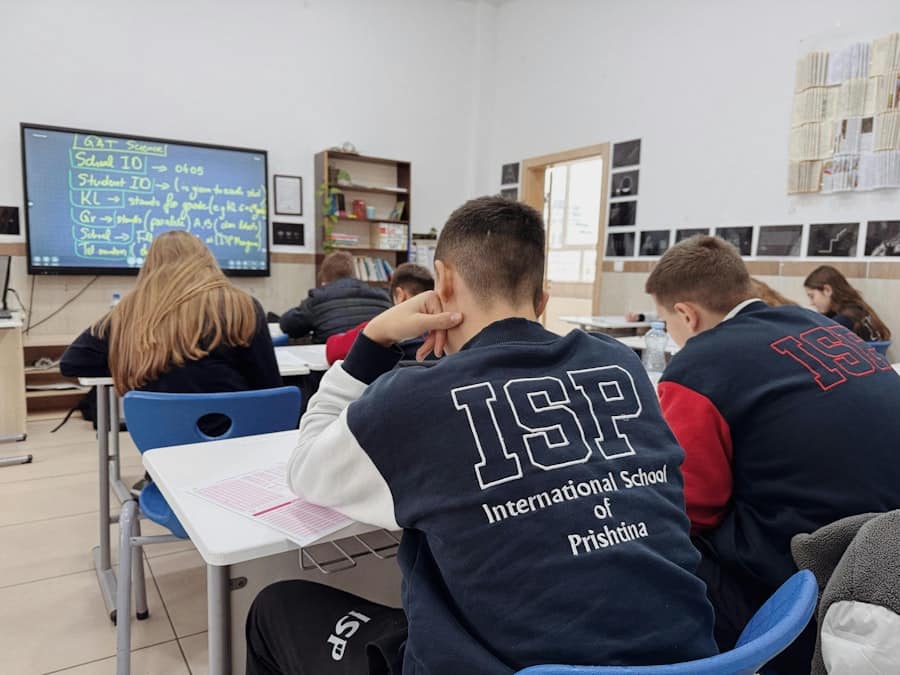The advent of educational technology, commonly referred to as EdTech, has revolutionized the landscape of learning, particularly in underserved regions where traditional educational resources are often scarce. In these areas, where access to quality education is frequently hindered by economic, geographical, and social barriers, EdTech emerges as a beacon of hope. By leveraging digital tools and platforms, EdTech aims to bridge the educational divide, providing learners with opportunities that were previously unattainable.
The integration of technology into education not only enhances the learning experience but also empowers students and educators alike, fostering an environment conducive to growth and development. In many underserved regions, the challenges faced by educational institutions are multifaceted. Limited access to trained teachers, inadequate infrastructure, and a lack of learning materials can severely impede the educational process.
However, EdTech offers innovative solutions that can circumvent these obstacles. For instance, mobile learning applications and online courses can reach students in remote areas where physical schools may be nonexistent. By harnessing the power of the internet and mobile technology, EdTech has the potential to democratize education, making it accessible to all, regardless of their socio-economic status or geographical location.
Key Takeaways
- EdTech has the potential to revolutionize education in underserved regions by providing access to quality education.
- EdTech can address infrastructure challenges by providing solutions that do not rely on traditional physical infrastructure.
- Language barriers can be overcome through EdTech by providing language learning tools and resources.
- EdTech can provide personalized learning experiences tailored to individual student needs and learning styles.
- Teachers in underserved regions can be empowered through EdTech tools and training, enhancing their ability to deliver quality education.
The Impact of EdTech on Access to Quality Education
Personalized Learning Experiences
Online platforms such as Khan Academy and Coursera offer a wide range of courses across different subjects, allowing students to learn at their own pace. This flexibility is particularly beneficial for learners who may have other responsibilities or face time constraints due to family obligations or work commitments.
High-Quality Content and Collaborative Learning
These platforms often provide high-quality content developed by experts, ensuring that students receive an education comparable to that offered in more affluent areas. Moreover, EdTech facilitates collaborative learning experiences that transcend geographical boundaries. Virtual classrooms enable students from different parts of the world to connect and learn together, fostering a sense of community and shared knowledge.
Global Connections and Cross-Cultural Understanding
For example, initiatives like Global Online Academy allow students from underserved regions to participate in courses alongside peers from more developed countries. This exposure not only enriches their educational experience but also broadens their perspectives, preparing them for a globalized world where cross-cultural communication and collaboration are essential skills.
Addressing Infrastructure Challenges with EdTech Solutions

One of the most pressing challenges in underserved regions is the lack of adequate infrastructure to support traditional educational models.
EdTech solutions can address these infrastructure challenges by utilizing low-tech and offline resources that do not rely heavily on advanced infrastructure.
For instance, solar-powered tablets preloaded with educational content can be distributed to students in remote areas where electricity is unreliable or nonexistent. Additionally, community-based initiatives can play a crucial role in implementing EdTech solutions effectively. Local organizations can partner with technology providers to create mobile learning centers equipped with internet access and digital devices.
These centers can serve as hubs for learning, offering students a safe space to engage with educational content while also providing training for teachers on how to integrate technology into their teaching practices. By addressing infrastructure challenges through innovative solutions, EdTech can create sustainable pathways for education in underserved regions.
Overcoming Language Barriers through EdTech
Language barriers often pose significant obstacles to education in diverse regions where multiple languages are spoken. Many students may not have access to educational materials in their native languages, leading to disengagement and poor academic performance. EdTech offers tools that can help overcome these barriers by providing multilingual resources and language learning applications.
For example, platforms like Duolingo and Rosetta Stone enable learners to acquire new languages through interactive lessons and gamified experiences. Furthermore, EdTech can facilitate the creation of localized content that reflects the cultural context and linguistic diversity of underserved regions. By involving local educators and communities in the development of educational materials, technology providers can ensure that content is relevant and accessible.
This approach not only enhances comprehension but also fosters a sense of ownership among learners, encouraging them to engage more deeply with the material. As a result, EdTech becomes a powerful ally in promoting inclusivity and equity in education.
The Role of EdTech in Providing Personalized Learning
Personalized learning is a pedagogical approach that tailors education to meet the individual needs of each student. In underserved regions, where classrooms are often overcrowded and teachers may struggle to address diverse learning styles, EdTech can play a pivotal role in facilitating personalized learning experiences. Adaptive learning technologies use algorithms to assess students’ strengths and weaknesses, providing customized content that aligns with their unique learning paths.
Platforms like DreamBox Learning and IXL offer personalized math instruction that adjusts in real-time based on student performance. Moreover, personalized learning through EdTech empowers students to take ownership of their education. With access to a variety of resources and learning modalities—such as videos, interactive simulations, and quizzes—students can choose how they engage with the material.
This autonomy fosters motivation and encourages self-directed learning, which is particularly important in underserved regions where traditional educational structures may be lacking. By embracing personalized learning through technology, educators can create more inclusive environments that cater to the diverse needs of their students.
Empowering Teachers with EdTech Tools and Training

Building Confidence and Competence in EdTech
Professional development programs that focus on integrating technology into teaching practices are essential for building teachers’ confidence and competence in using EdTech effectively.
Teacher Training and Support Initiatives
Organizations like Teach For All provide training programs that equip teachers with the skills needed to leverage technology in their classrooms. These programs often include hands-on workshops where educators can explore various digital tools and learn how to incorporate them into their lesson plans. Additionally, online communities and forums allow teachers to share best practices and collaborate with peers from around the world.
Creating a Ripple Effect in Education
By investing in teacher training and support, EdTech initiatives can create a ripple effect that ultimately benefits students and enhances the overall quality of education. By empowering teachers, EdTech can have a lasting impact on the educational experience, leading to improved student outcomes and a brighter future for underserved regions.
EdTech’s Contribution to Skill Development and Employment Opportunities
In today’s rapidly changing job market, equipping individuals with relevant skills is paramount for economic development, particularly in underserved regions where employment opportunities may be limited. EdTech plays a crucial role in facilitating skill development by offering vocational training programs and courses tailored to local job markets. Platforms like Udacity and LinkedIn Learning provide access to courses in high-demand fields such as coding, digital marketing, and data analysis, enabling learners to acquire skills that enhance their employability.
Moreover, partnerships between educational institutions and local businesses can further bridge the gap between education and employment. By collaborating with industry leaders, EdTech initiatives can develop curricula that align with workforce needs, ensuring that graduates possess the skills required by employers. For example, coding boot camps have emerged as effective models for skill development in underserved regions, providing intensive training programs that prepare individuals for careers in technology.
As a result, EdTech not only empowers learners with knowledge but also opens doors to economic opportunities that can transform communities.
Challenges and Opportunities for EdTech in Underserved Regions
Despite its potential benefits, the implementation of EdTech in underserved regions is not without challenges. One significant hurdle is the digital divide; while technology has become increasingly prevalent globally, disparities in access remain pronounced. Many students still lack reliable internet connectivity or access to devices necessary for engaging with digital content.
Addressing this divide requires concerted efforts from governments, NGOs, and private sector stakeholders to invest in infrastructure development and ensure equitable access to technology. Additionally, cultural attitudes towards technology and education can influence the adoption of EdTech solutions. In some communities, there may be resistance to integrating technology into traditional educational practices due to concerns about its effectiveness or relevance.
To overcome these challenges, it is essential for EdTech initiatives to engage local stakeholders—educators, parents, and community leaders—in meaningful dialogue about the benefits of technology in education. By fostering a sense of ownership and collaboration among all parties involved, EdTech can create sustainable change that resonates within underserved regions. In conclusion, while challenges persist in implementing EdTech solutions in underserved regions, the opportunities for transformative change are immense.
By harnessing technology’s potential to enhance access to quality education, address infrastructure challenges, overcome language barriers, provide personalized learning experiences, empower teachers, facilitate skill development, and create pathways for employment opportunities, EdTech stands poised to make a lasting impact on the educational landscape worldwide.
In addition to bridging learning gaps in underserved regions, technology can also enhance creativity and productivity in various fields. For example, the article “Unlock Your Creative Potential with the Samsung Galaxy Book Flex2 Alpha” explores how this innovative device can help individuals unleash their creativity and maximize their productivity. By utilizing cutting-edge technology like the Samsung Galaxy Book Flex2 Alpha, individuals can not only bridge learning gaps but also excel in their creative endeavors.
FAQs
What is EdTech?
EdTech, short for educational technology, refers to the use of technology to facilitate and enhance learning. This can include digital tools, software, and platforms designed to support education.
What are learning gaps in underserved regions?
Learning gaps in underserved regions refer to disparities in educational achievement and access to quality learning resources. These gaps can be caused by factors such as limited infrastructure, lack of qualified teachers, and inadequate learning materials.
How is EdTech bridging learning gaps in underserved regions?
EdTech is bridging learning gaps in underserved regions by providing access to educational resources and opportunities that may not be readily available through traditional means. This can include online learning platforms, digital content, and interactive tools that can supplement or enhance traditional classroom instruction.
What are some examples of EdTech initiatives in underserved regions?
Examples of EdTech initiatives in underserved regions include the use of mobile learning apps to deliver educational content, the implementation of online tutoring programs to support students in remote areas, and the provision of digital libraries to expand access to reading materials.
What are the benefits of using EdTech in underserved regions?
The benefits of using EdTech in underserved regions include the potential to reach more students, improve the quality of education, and provide personalized learning experiences. EdTech can also help overcome barriers such as distance and resource limitations.

